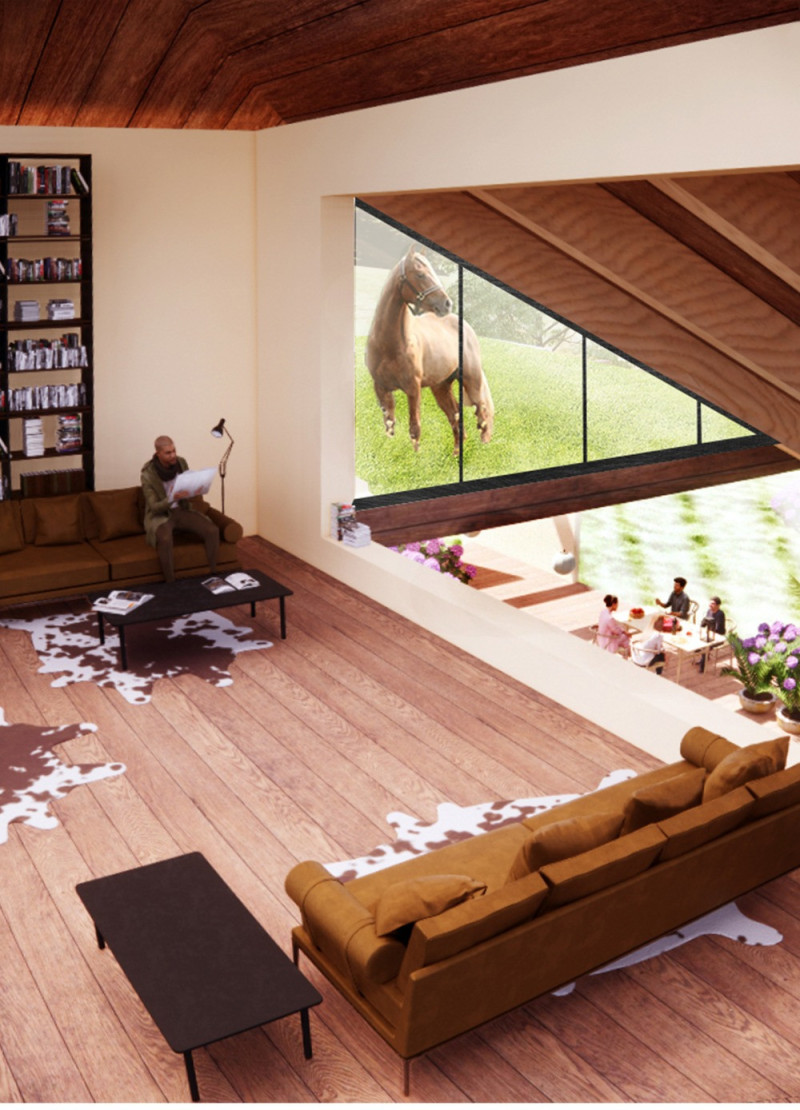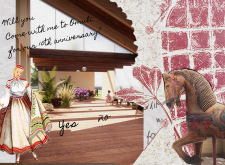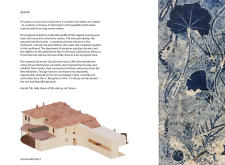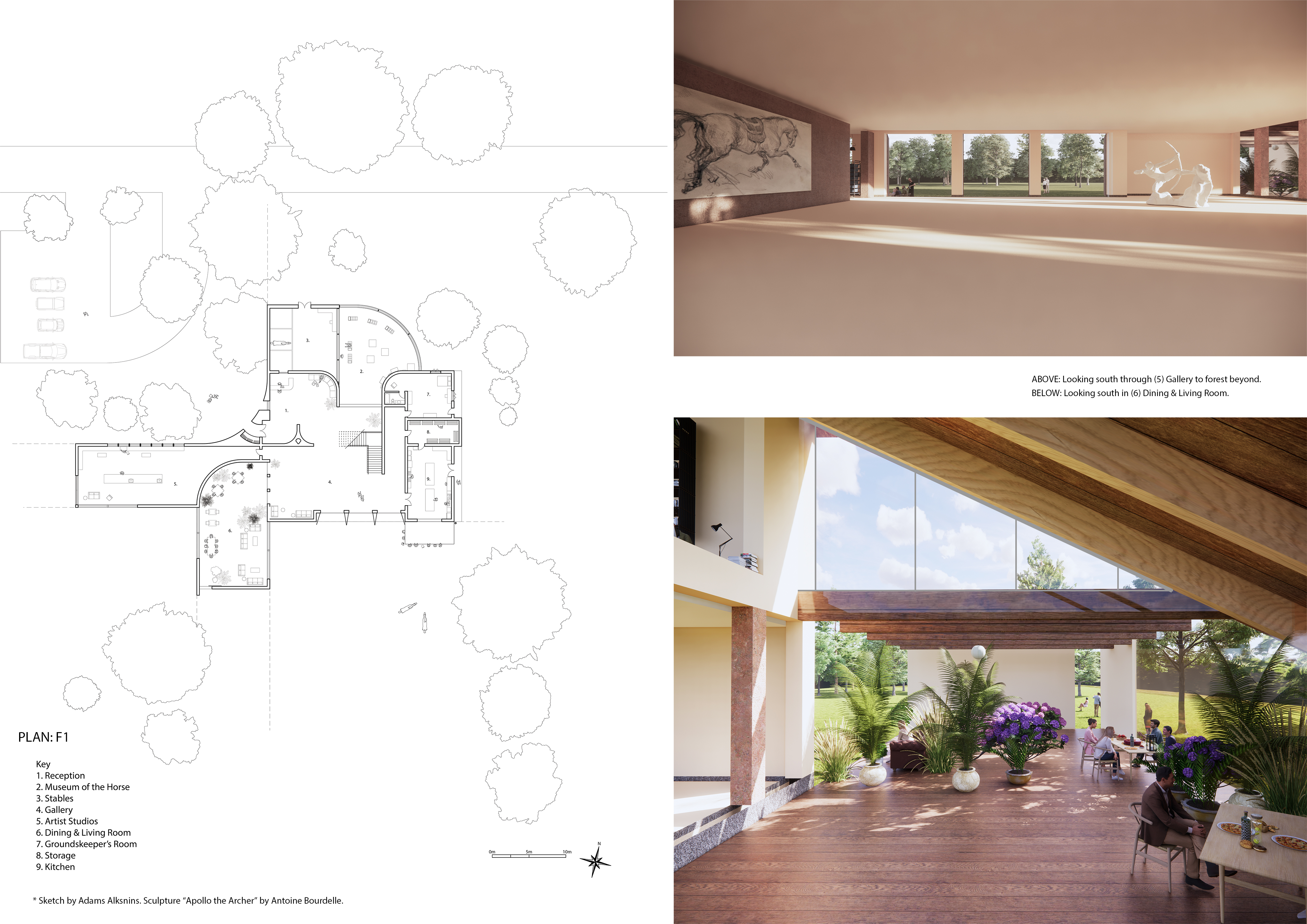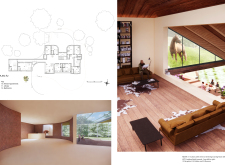5 key facts about this project
The project in Omuli, Latvia, invites a conversation between architecture and nature. It is designed as a space for living and community gatherings, reflecting on the notion of a love letter. The concept emphasizes connections—between people, the environment, and animals. By moving away from typical castle-like designs, the structure frames the landscape rather than dominating it.
Conceptual Framework
The layout divides the site into three main areas: a forest entrance located in the northwest, a wide-open field to the south, and a protected garden in the southwest. This arrangement encourages exploration and offers different experiences of the surroundings. Each zone supports individual moments of quiet reflection or communal activities, making it adaptable to various needs.
Material Utilization
Windows and glass facades are central to the design. They are carefully placed to allow natural light to fill the spaces and to frame views of the landscape. The Dining & Living Room features a greenhouse-like design, which creates a transition from inside to outside. Occupants can enjoy the sights and sounds of nature, whether it be the sound of rain or the sparkle of stars at night, enhancing the overall experience.
Cultural Integration
A distinctive feature is the museum dedicated to horses, which highlights their importance within the local culture. By incorporating native horses into the space, the design showcases their beauty and grace. This element fosters a sense of connection between people and animals, inviting visitors to learn and engage with both in meaningful ways. It serves as a reminder of the relationship between humans and the natural world.
Spatial Dynamics
The arrangement of shared areas, particularly the Dining & Living Room, encourages social interaction. By placing communal spaces alongside essential functions, the design promotes gatherings and conversations. This thoughtful layout allows for a blend of private moments and shared experiences, making the environment lively and inviting.
Overall, different aspects of the design work together to create an environment that encourages engagement with both the landscape and fellow community members. The features invite occupants to immerse themselves in the surroundings and share moments, whether in quiet contemplation or vibrant social gatherings.


